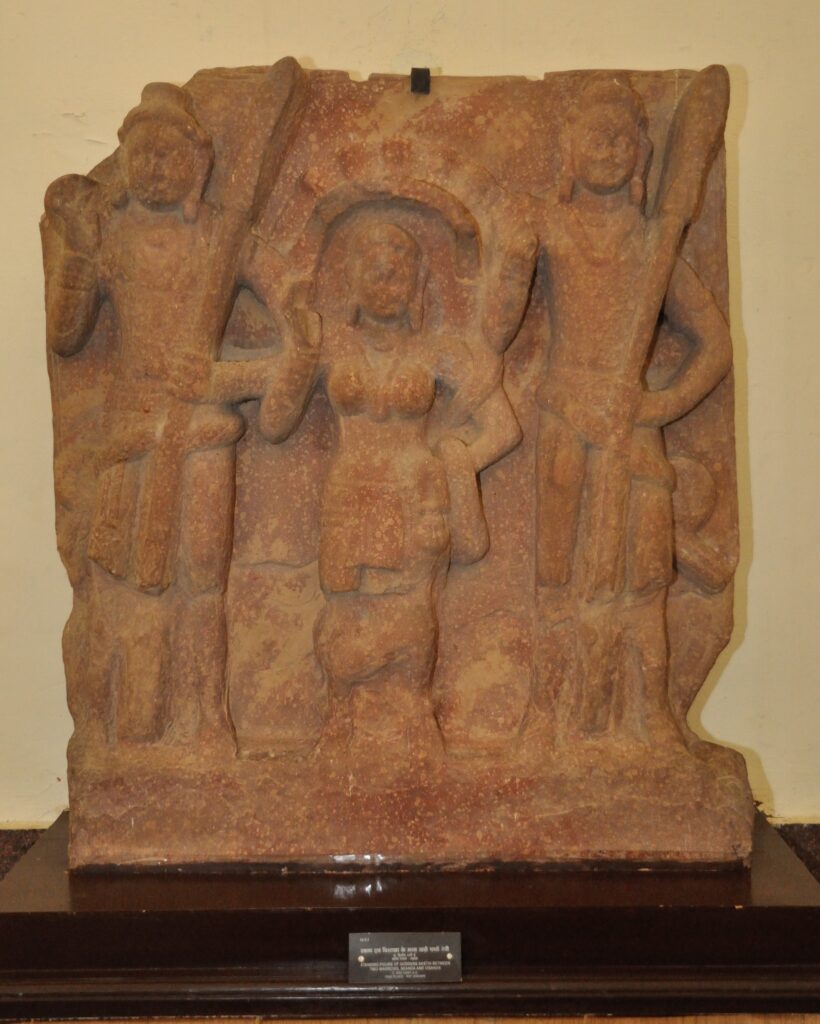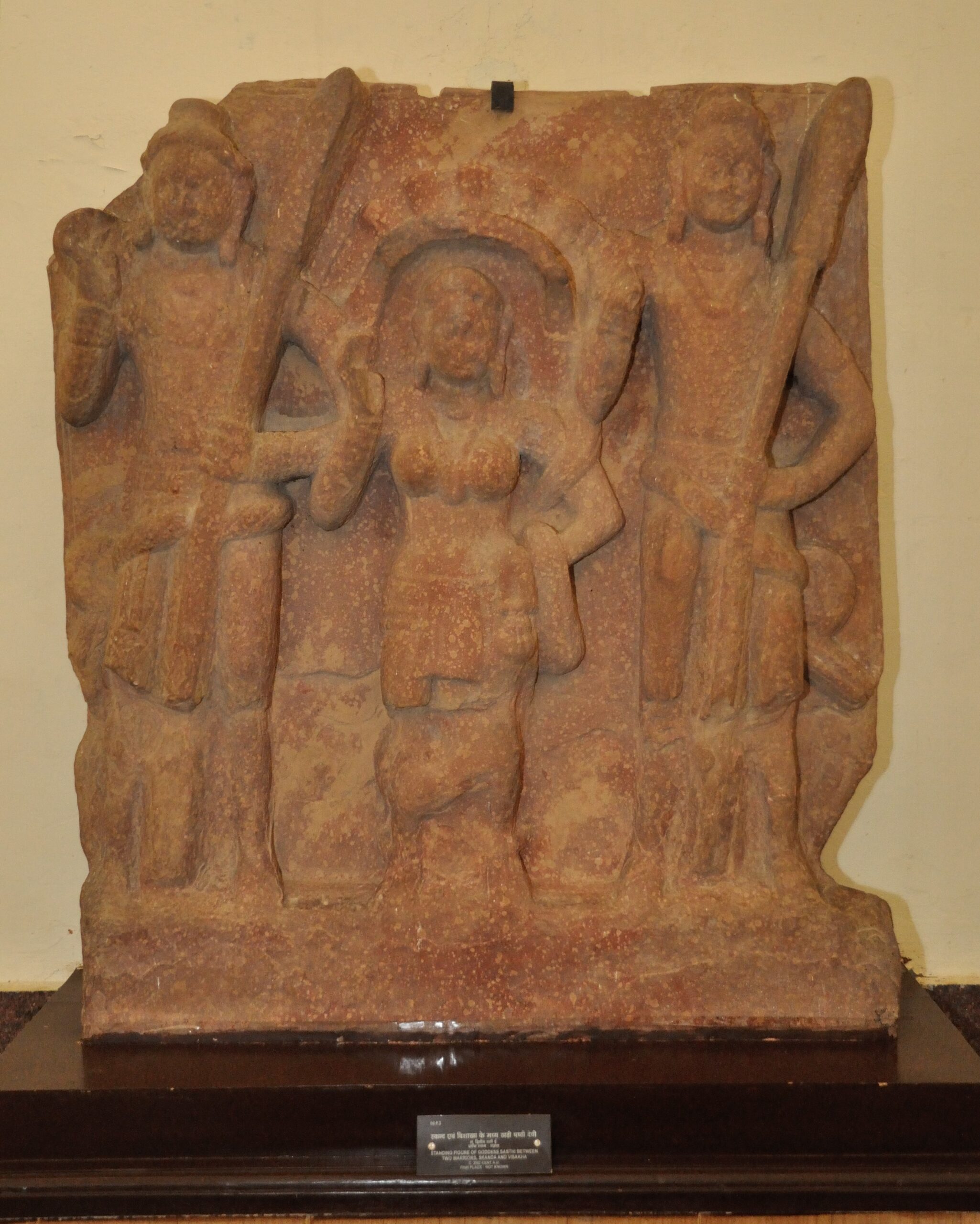The mysteries surrounding Shashti, the Hindu goddess, are celebrated for her benevolence and protection of children. The roots of this ancient tradition and its rituals continue to grace households seeking fertility and divine blessings.
By Satish Mahaldar
Shashti or Shashiti, derived from the Sanskrit term षष्ठी (Ṣaṣṭthī), meaning “sixth,” holds a revered position in Hinduism as a goddess worshipped in India. She is hailed as the benevolent guardian of children and the deity associated with plants and fertility. It is believed that she bestows children and aids in childbirth. Shashthi, depicted as fair and beautiful like the champak flower, is adorned with ornaments, displaying a merciful and benevolent nature. The roots of her worship trace back to the Kashyap Samhita, composed during the Kushan period.
Devotees perform the worship of Shashti on the sixth day of each lunar month in the Hindu calendar and on the sixth day after the birth of a child. Infertile women seeking conception and mothers desiring protection for their children turn to Shashti, seeking her blessings and assistance. Particularly significant is her association with Maya, her sixth form of Prakriti, and her role as the sister of Lord Surya.
In artistic representations, Shashti appears as a motherly figure, often depicted nursing or carrying as many as eight infants. Her complexion is commonly portrayed as yellow or golden, and Dhyana Mantras describe her adorned in sacred garments and jewelry, with auspicious twigs on her knees, radiating a beautiful appearance. Additionally, her cat, the vahana (mount), is an integral part of her imagery, and historical depictions vary, with some attributing a cat’s face to Shashti, while others describe her with a bird-like visage.
During the Kushan period (1st to 3rd century AD), Shashti is portrayed as a Skanda-like figure with six heads. Coins, carvings, and inscriptions from 500 BC to 1200 AD frequently feature her six-headed form, often alongside Skanda and Vishakha in the Vrishni triad.
Terracotta figurines from the Gupta period reveal Shashti with three heads in the front and three in the back. Folk representations involve a red stone, approximately the size of a human head, placed under a banyan tree, sometimes adorned with flowers and offerings. Shashti is also symbolized through the planting of banyan trees or branches in family gardens.

Scholars believe that Shashti’s origins are rooted in Hindu folklore, with references to her appearing in Hindu scriptures as early as the 8th century BC. Initially perceived as a potentially malevolent force causing illness, particularly in mothers and children, over time, Shashti transformed into a benevolent deity and a giver of children.
The narrative of Shashti is detailed in the chapter titled ‘Shashti Devupakyanam’ in the ‘Brahma Vaivarta Purana’ and ‘Devi Bhagavata Purana.’ The story revolves around King Priyavrata, who, after a prolonged attempt to conceive, performs a Putrakamesthi Yagna and encounters Shashti. The goddess revives his son and, in return, requires the king to spread her worship in all three realms.
Shashti is often depicted holding a sword and shield in her lower hands, while the upper hands carry kalasas. Seated on a large lotus, she exudes a golden appearance, with a child on her lap symbolizing her protective powers over newborns. The worship of Goddess Shashti, associated with Skanda, is observed on the sixth day following a child’s birth, with a partial fast observed on that day.
The ‘Brahma Vaivarta Purana,’ one of the major eighteen Puranas, describes Shashti as the sixth aspect of Parama Prakriti, universal female energy. Ritual worship of Shashti is emphasized on the sixth day after a child’s birth, as neglecting it may provoke the goddess to harm the infant.
The genealogy of Shashti is outlined in the Puranas, associating her with Skanda-Kartikeya. Initially conceived as the adoptive mother of Skanda, later texts identify her as Skanda’s consort Devasena. The goddess Shashti is linked to the sixth day, children, and childbirth across various traditions.
The worship of Shashti involves invoking her blessings for motherhood and the well-being of children. Pujas are conducted with figureless deities planted under Kadamba trees, often represented by stones adorned with flowers. Traditional offerings include hand-fans and fruits, with a black cat revered on that auspicious day.
The ‘Brahma Vaivarta Purana’ underscores the importance of appeasing Shashti through ritual worship, emphasizing the consequences of neglecting the sixth-day observance after a child’s birth. The narrative delves into the story of King Priyavrata and his encounter with Shashti, resulting in the revival of his son and the establishment of her worship.
Shashti’s depiction involves her holding a sword, shield, and kalasas, seated on a lotus, with a child symbolizing her protective powers. She is associated with Skanda, known as Skandamata, an extension of Mother Durga. The rural origins of Shashti are evident in the sixth-day worship following a child’s birth, with fathers paying respects followed by mothers on the 21st day. A partial fast is observed on this occasion.
The ‘Brahma Vaivarta Purana,’ a significant Purana, narrates the creation of the universe, histories of goddesses, and the life and deeds of Lord Ganesha and Lord Krishna. Shashti is depicted as the sixth aspect of Parama Prakriti, and the text recommends appeasing her through ritual worship, particularly on the sixth day after childbirth.
Shashti’s origin is multifaceted in literature, with references portraying her as the worshipful guardian of infants in all realms. She is characterized as motherly, merciful, and a savior, appearing in the dreams of infants across different landscapes. The goddess Shashti is linked to the sixth day, children, and childbirth in various interpretations.
In the Kushan era, Shashti is represented with two arms and six heads, depicted on coins, sculptures, and inscriptions from 500 BCE to 1200 CE. She is often shown surrounded by Skanda and Vishakha, with a central head encircled by five female heads. Notably, only two images of Mother Shashti from the 12th century AD have been found in erstwhile Bihar, depicting her with a child on her lap mounted on a black cat.
The Shashti Vrata, observed on the sixth day of the bright fortnight, involves married women invoking the blessings of Goddess Shashti for motherhood and the longevity of their children. The worship typically involves figureless deities planted under a Kadamba tree, with stones decorated with flowers. Traditional offerings include hand-fans, and a black cat is revered on this auspicious day.
The ‘Brahma Vaivarta Purana’ presents the Shashthi vrata katha, emphasizing the consequences of neglecting the sixth-day observance after childbirth. The narrative includes the story of a sage finding an infant beneath an ashoka tree, leading to the establishment of the Ashoka Shashthi Vrata. This observance, celebrated in March, involves a young girl named Ashoka, raised by a sage beneath an Ashoka tree. The narrative draws parallels with the Padma Purana, highlighting the importance of the Ashoka tree in Shashti worship.
The multifaceted representation of Goddess Shashti, intertwined with the worship of Skanda, showcases the goddess as a protective force associated with the well-being of children and childbirth. The observance of Shashti holds cultural significance, with rituals and narratives emphasizing the goddess’s role in granting blessings and averting harm to infants. The worship of Shashti, rooted in Hindu folklore and scriptures, continues to be a revered tradition, with devotees seeking her benevolence for the welfare of their families.
The views expressed in this article are solely those of the author and do not necessarily reflect the opinions or views of this Magazine. The author can be reached at [email protected]

Leave a Reply